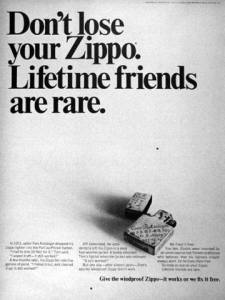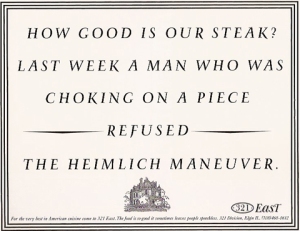Consumerism? What’s That?
Here’s what Wiki says:
Consumerism is a social and economic order that encourages the purchase of goods and services in ever-greater amounts.
It is certainly something that drives all of us to constantly keep buying and have the craving to buy time and again. With a bend to figure out, what to buy, when to buy, how much to buy and how often to buy, consumerism has certainly been part of our lives since kingdom come. Interesting to notice how it is primarily driven on the basis of what others are buying and on the sheer influence of a majority of factors in the market. Have you’ve watched this movie ‘The Joneses,’ You’ll know what I mean…
Some key factors that affect the purchasing decisions are:
- What purchases are happening and what the market trends are.
- How buying behaviors are affecting lives of people in your region.
- How advertisers both on Social Media and offline are influencing the consumers.
- Price point and offers / how much more do I get if I buy this today.
- Finally there is the ‘I need this because I ‘NEED’ this.
Yes, a minimal thought is given these days by consumers on ‘need to have’ as opposed to ‘want to have’ because of the ridiculous amount of money brands are spending on advertising, giving deals and discounts and a lot of other factors to increase consumption and consumerism. That is also rolling out on Social / Digital Media. But in the bargain, the true question to ask is…
Are your consumers really listening to you? Or have they become zombies who are brainwashed to buy your product based on incessant levels of advertising? As an advertiser or marketer we certainly need to create the ‘want to have’ aspiration for our buyers. But as a product builder, it’ll always be the opposite of it unless, you are someone like an Apple Inc.
It is always a good thing to really reach out to your consumer and engage them within your community and target group. It’s also important to focus on the ‘Big or Small’ whatever data you analyze and engage with them one-one. Being there for your consumers, rather than shoving something down their throat through sometimes insignificant or even irrelevant forms of advertising, including Facebook andLinkedIn media buy. It is ironic that the same marketers and advertisers are consumers themselves at the end of the day be it on digital, social or mainline media.
Speaking of which, there’s an interesting story I have to tell. One that I observed in a grocery store while I was out to buy a couple of things to eat as a consumer. I usually get a lot of insights out there. Some things that you could really use as a marketer/advertiser especially if you want to understand your consumers better.
So here’s what happened:
I was waiting in the queue before checking out with my purchases. There was a father who was with his 2 year old son in front of me and there was a mother with his 9 year old son behind me in the queue. (Approximate ages of the kids)
Scenario 1
The father ( approximately 37 years old) had a fairly empty to medium filled trolley. He had picked up an ordinary packet of candies maybe worth Rs. 20 for his 2 year old kid. Then the kid saw a big Dairy Milk in the rack, which probably is worth Rs. 30/40 bucks. As soon as he decided he wanted it, the kid wouldn’t let go of his packet of candies either, suggesting that he wanted both. But the dad, persuaded his 2 year old to trade the packet of candies for the Dairy Milk!
Scenario 2
The mom (approximately 34 years old) was waiting behind me, her trolley was generally full of stuff that you’d buy to consume on a daily basis, the vegetables, the packet of cereals, milk, butter/cheese, eggs, a huge bottle of cold drinks, some fruits, and probably a few cosmetic items. Her 9 year old son walked in from behind and he had 2 bars of Snickers, the smaller ones which would probably cost Rs. 10/20. She just told him to drop it in the trolley with no questions asked. So, what does one intercept from this observation? Many things probably and different people would come up with different interpretations. But one good thing about both the scenarios playing out at the same time was that it probably gave me a pretty hands on perspective on this buying behaviour.
This is what I can speculate.
Father knows Dairy Milk and has a better brand recall about the product. Keeping in mind the Indian parent buying behavior especially when it comes to chocolates I’d like to say Dairy Milk is always viewed as a premium brand of chocolate, no matter what it costs. And hence the intuitive need to haggle with a 2 year old kid to get rid of the candies packet.
In this case, Snickers, it may not have had a bigger brand recall with the mother and she wouldn’t really mind his kid buying those two packets as they anyways looked small.
These were my first two thoughts on impulse to interpret the behavior that I witnessed.
But if you come to think of it, there could be a multiple amount of permutations and combinations that might have affected the purchasing and influencing decision.
For example,
- What is the mindset of the father/mother?
- What is the spending power of the father/mother?
- What was his original intent of entering the grocery store and what he was willing to spend on extra purchases?
- How strong are their impulses, their gender and age and the kind of purchasing patterns they have etc.
- And of course, it would very well happen that the father and the mother both were just giving in to their kids demands, only difference in both of their behavior could have been the fact that the brand made a difference in their purchase.
So whether it is purchasing necessities, requirements or luxuries and indulgences, in our day to day lives, we all and I mean all of us consumers in the current economy and the conditions in India and worldwide are always affected by brands and brand recall certainly carries a lot of weight when making our purchases. I mean, that’s a given and I don’t even need to talk to this audience about it. We all know that.
Be it in mainline advertising or Social Media, our lives have dwelled within the breakup of our Target Demographic, the kind of things he/she buys, what age group he falls in and speculating what kind of things he/she likes, who are his primary/secondary influencers and what additional things are they interested in. That is our life 24×7, 365 and we all burn the midnight oil trying to decipher the consumer as if he/she was some code or a pattern sitting in front of our MacBooks, Desktops, iPads and laptops like the ‘operator’ from the Matrix.
Very few brands, let’s say Apple and mainly thanks to Steve Jobs, will take a call and say ‘Consumers don’t really know what they want.’ and if we were to do something that would appeal to them, then we aren’t really making a dent in the universe. We are mainly subverting our product to fit in and shove it down their throat for their consumption, actually consumption till the point where they actually puke until there’s no return.
So what am I trying to get to?
A few fundamental questions that I’d like to ask myself when it comes to Social Media or any form of marketing for that matter. I remember about a year and a half I wrote this blog post on brands getting their communication right.
I read that again now. Interesting to note that, this doesn’t change even today. But yes, I’d like to differ on one perspective.
Consumerism hasn’t yet reached its tipping point and most certainly all the things that we have been doing in the past will continue to stand. But what will make us and our brands more than just a commodity and as products to ‘stand out‘ is how we productize our services and servicize our products, something I learnt from The Purple Cow. Remember the irony I brought out in the beginning?
So the questions that will still linger in one’s mind are :
- Do consumers make decisions based on brand recall and communication?
Or consumers have their own wandering mind which no matter how hard we try, we cannot decipher and the trends will keep shifting depending on the herd mentality of the consumers.
Lastly, how do we really communicate to the consumer especially when we don’t have control most of the times over the product as marketers / advertisers
In a separate post, I have answered these questions in a different way, one that’ll help your brand be more than just a commodity, be it on social media or offline. I have written about how we need to build brands as products not commodities. .
Srinivas has been a communications
professional for over 15 years. He has worked with and built India's
largest digital agencies from the ground up and been part of their
acquistion journey. Social Wavelegnth (now Mirum, part of the WPP group)
and Kinnect, now part of the Interpublic Group (IPG). He's also been a
public speaker, keynote speaker at various large panels/events of the
likes of BBC Knowledge Summit, Blockchain Summit Bangalore. And has been
a guest lecturer at IIM, Symbiosis, Indian Institute of Digital
Education.
He has been blogging since 2005. And
also been author at various publications, that include Startup India by
ZDNet, Social Samosa, Lighthouse Insights. His passion for Writing,
Advertising, Creativity, Digital, Blockchain and Future Tech is what
drives him each day.

















